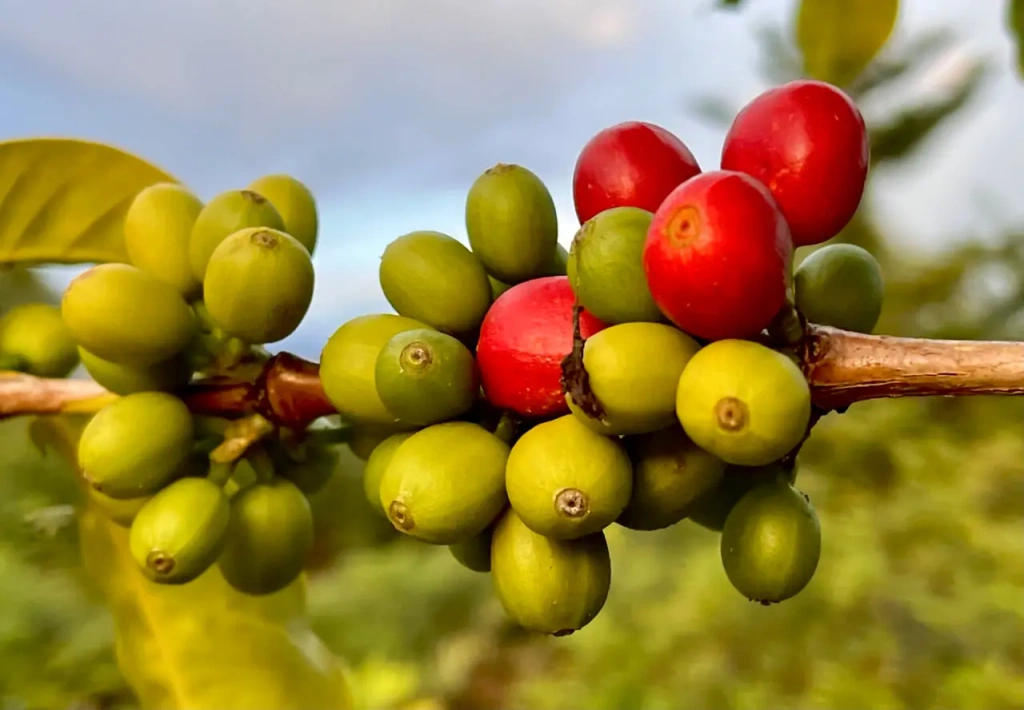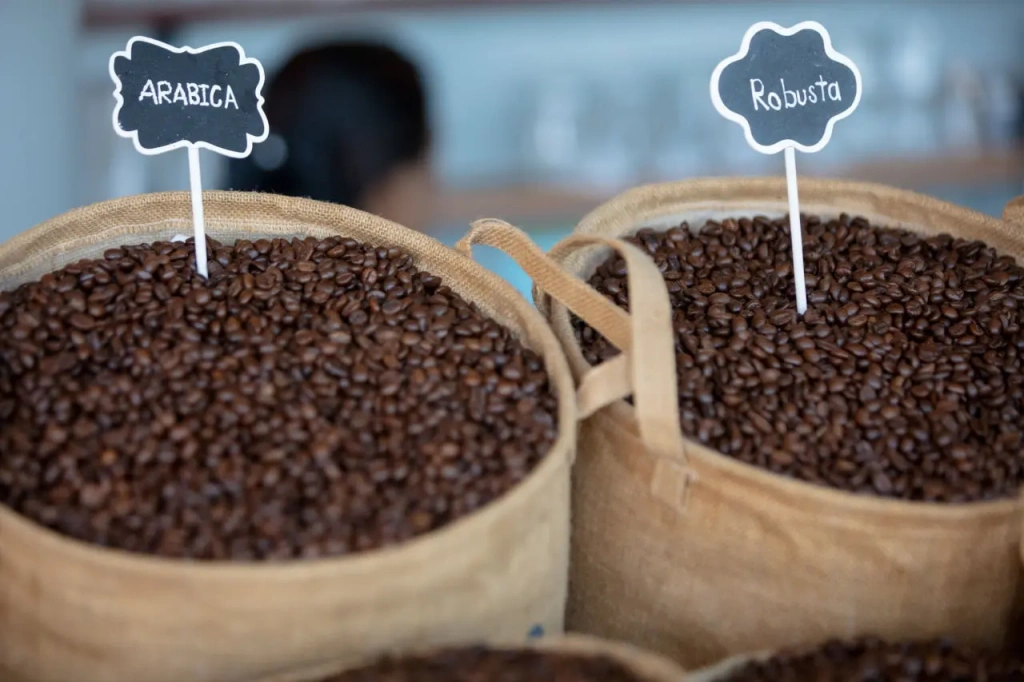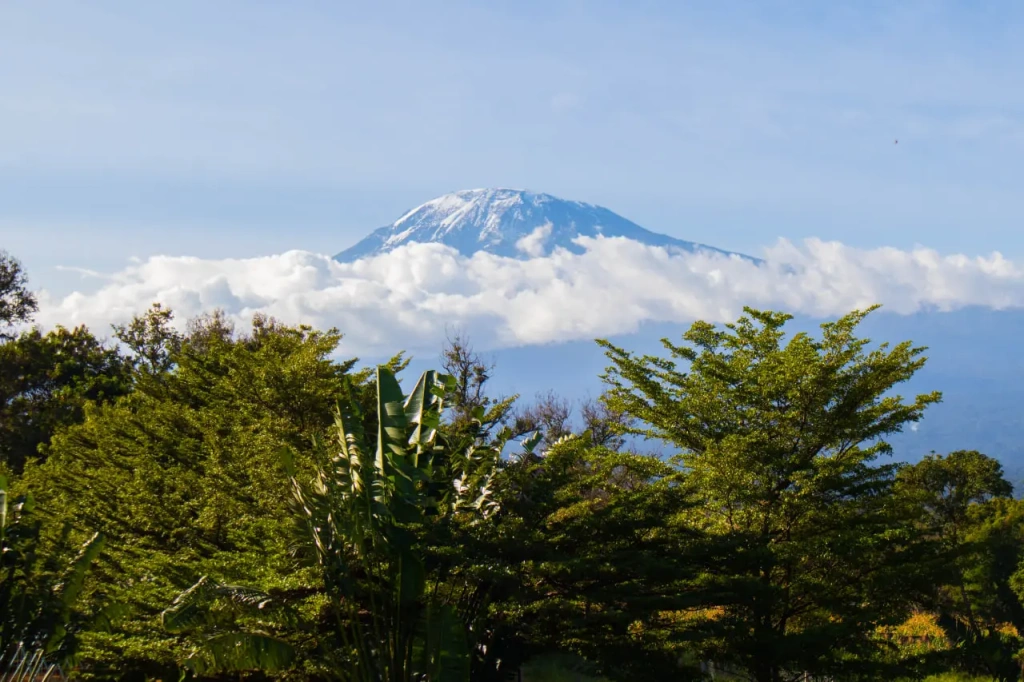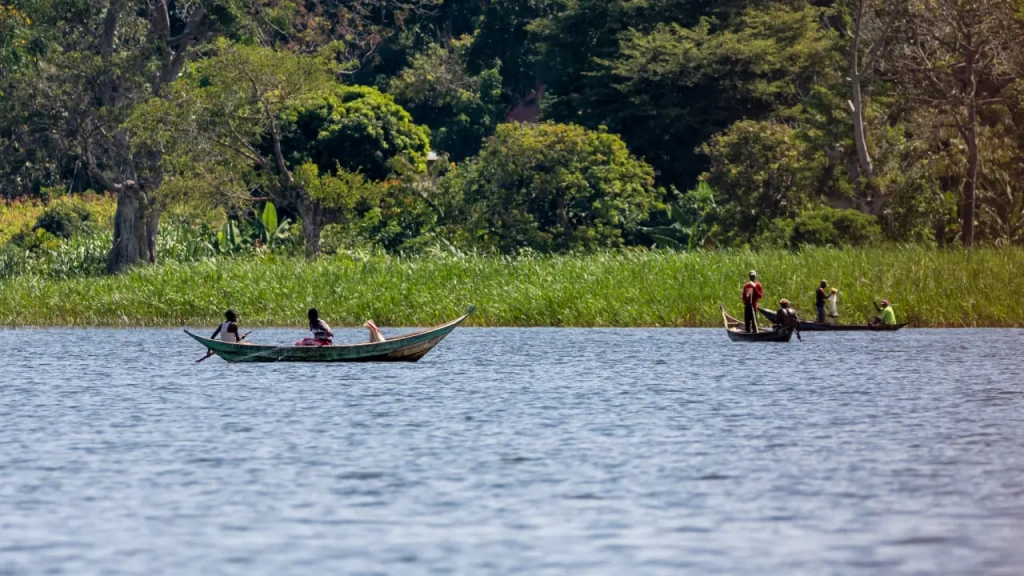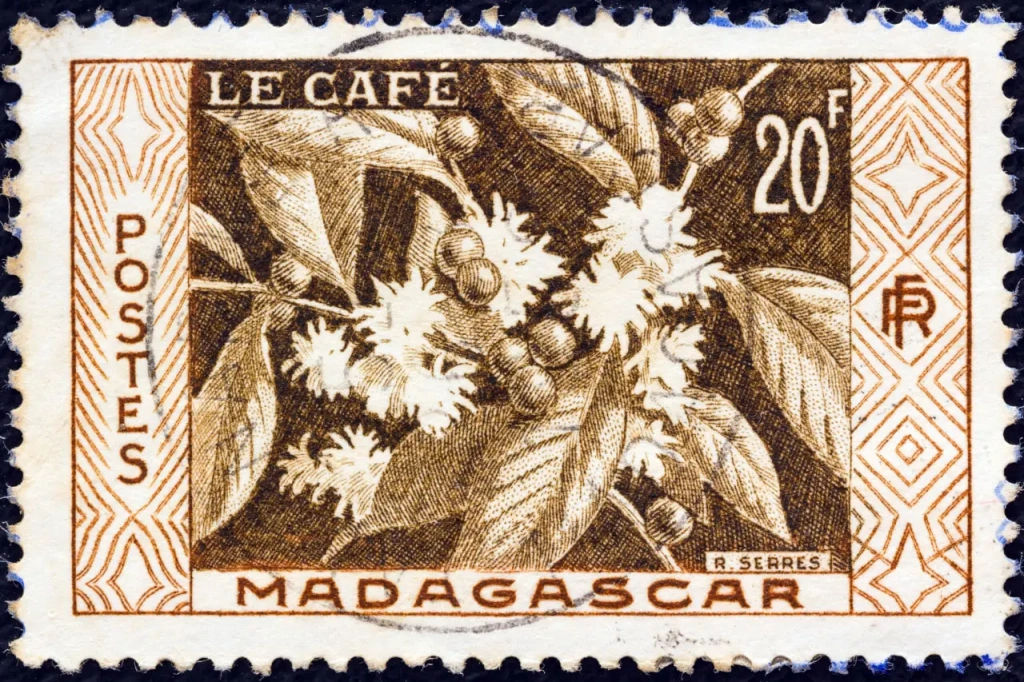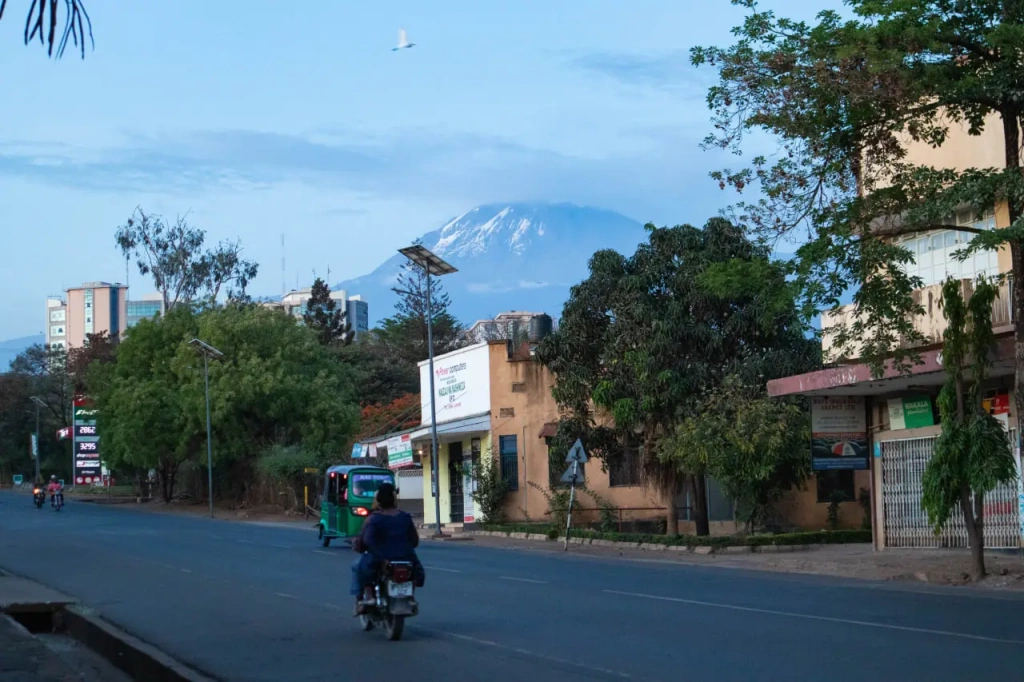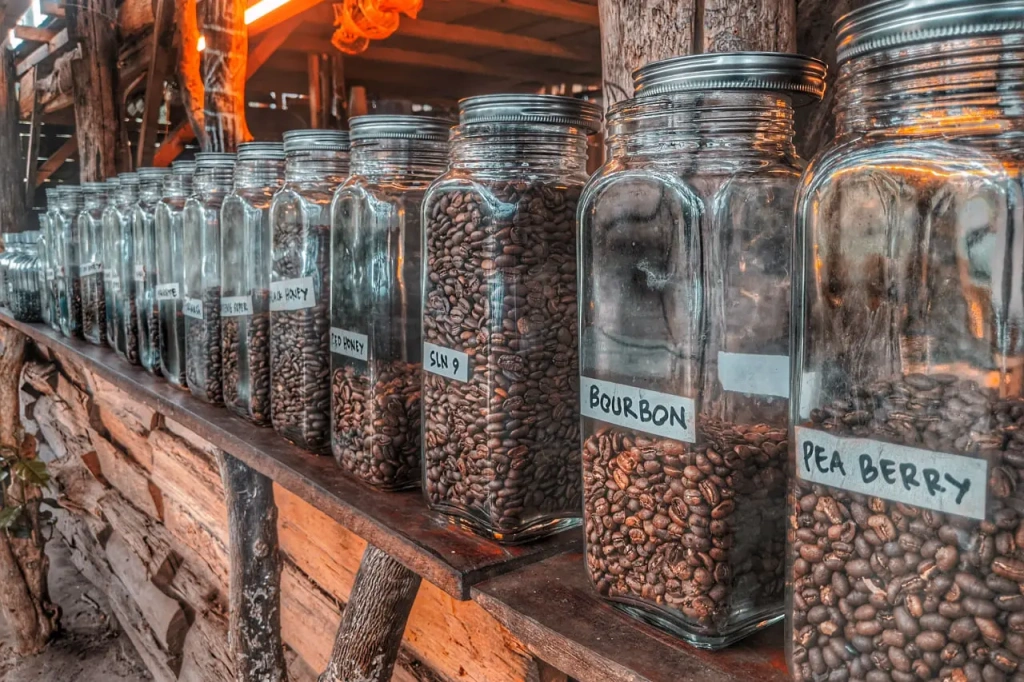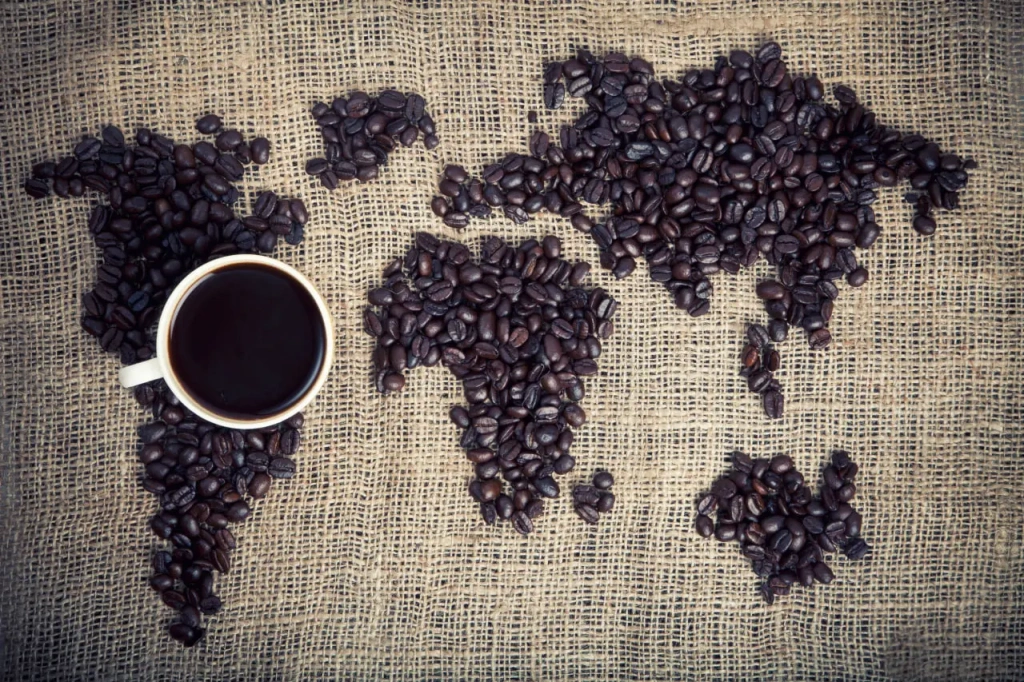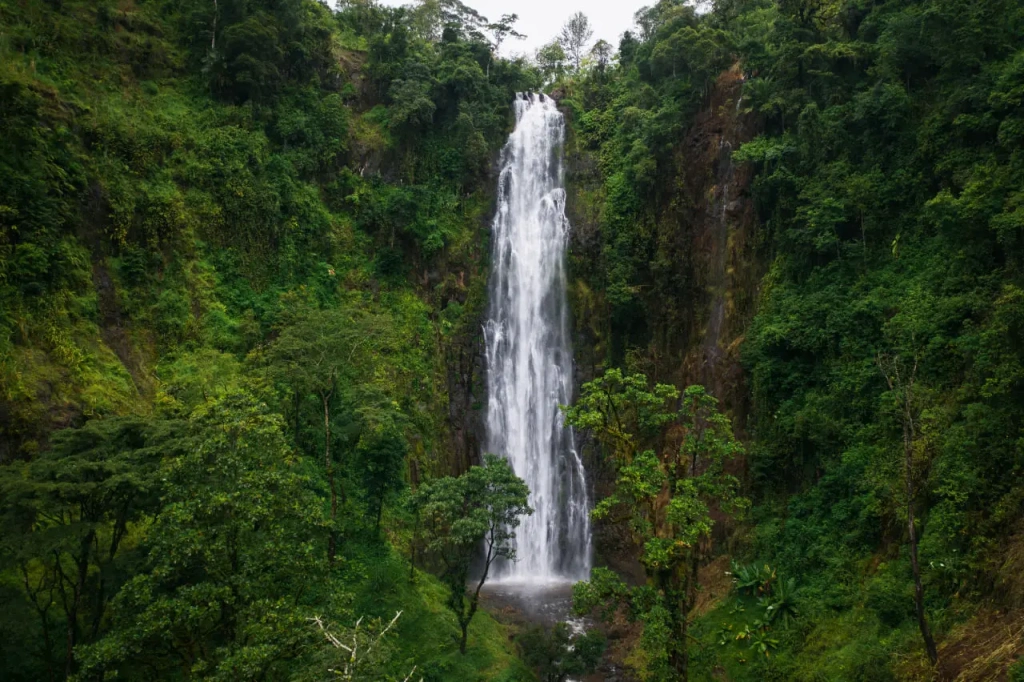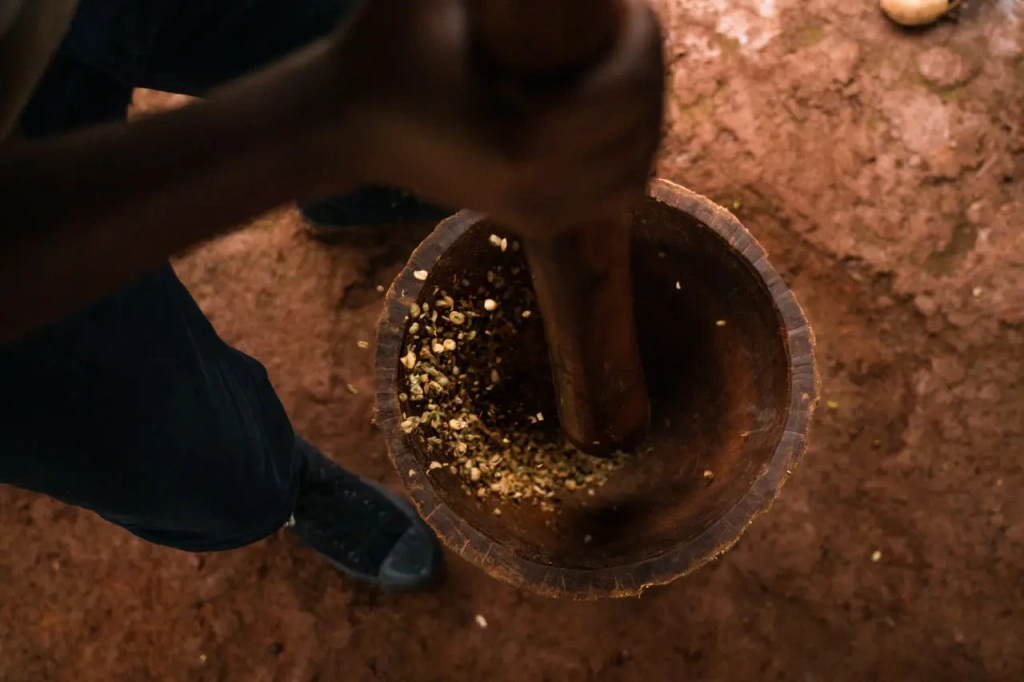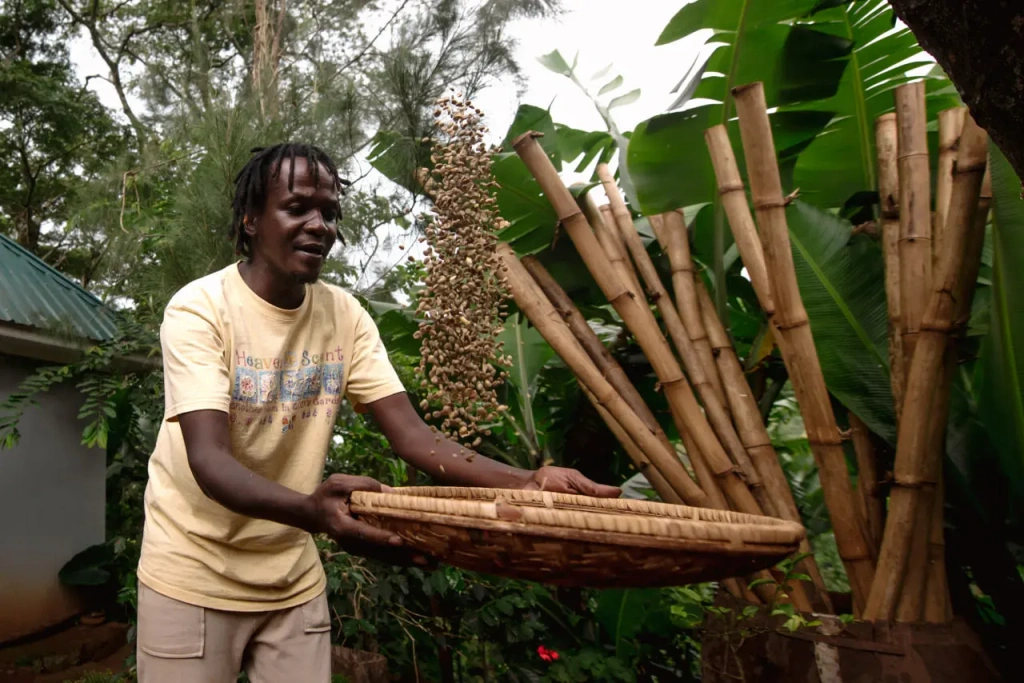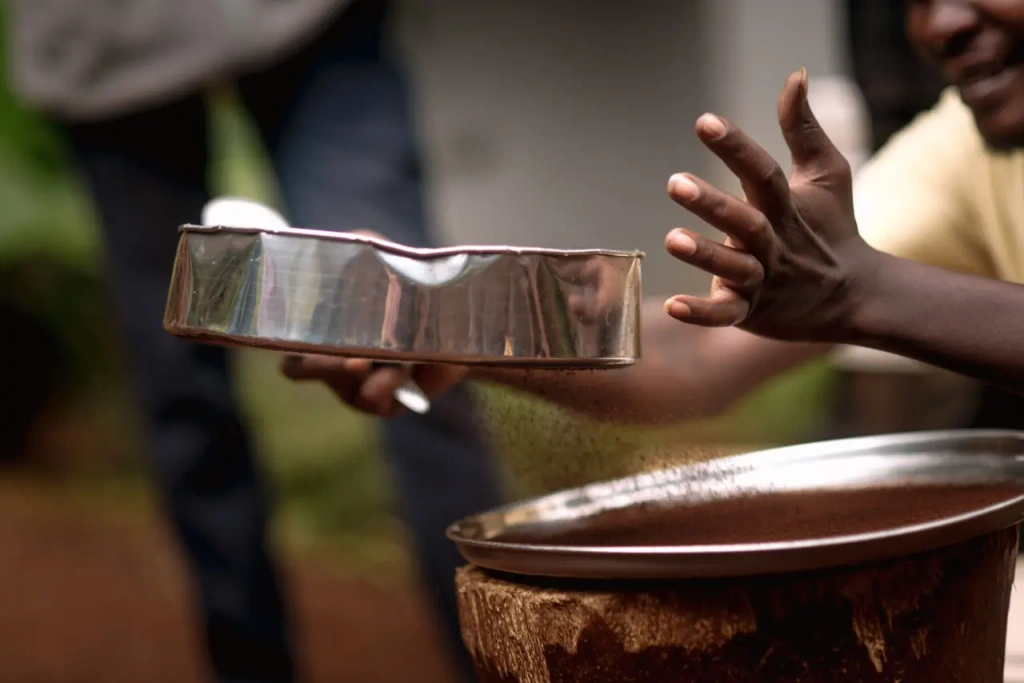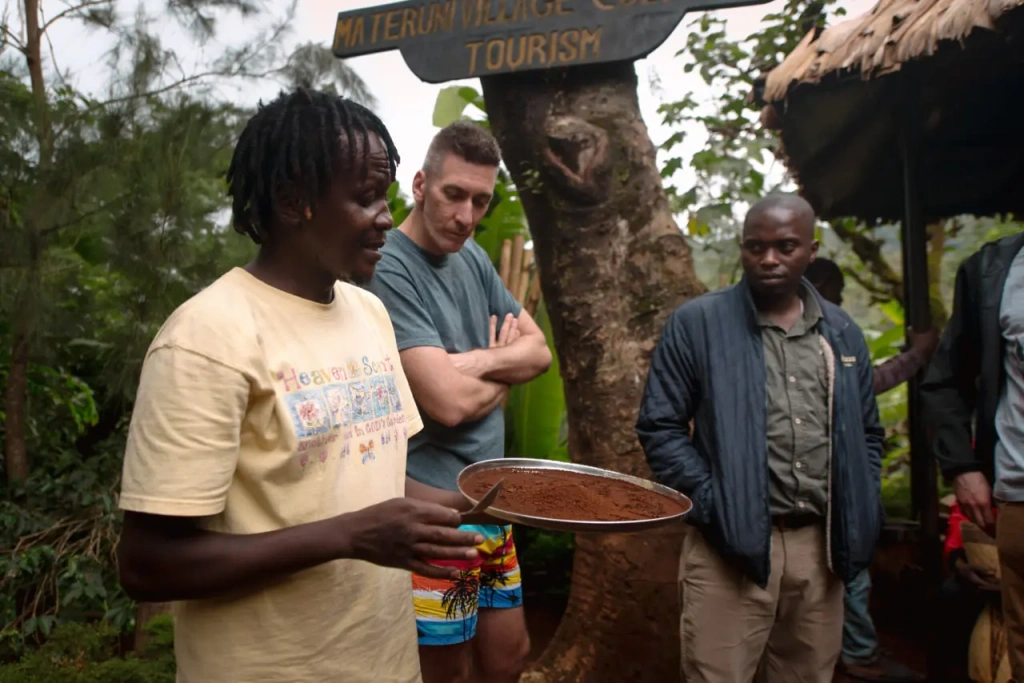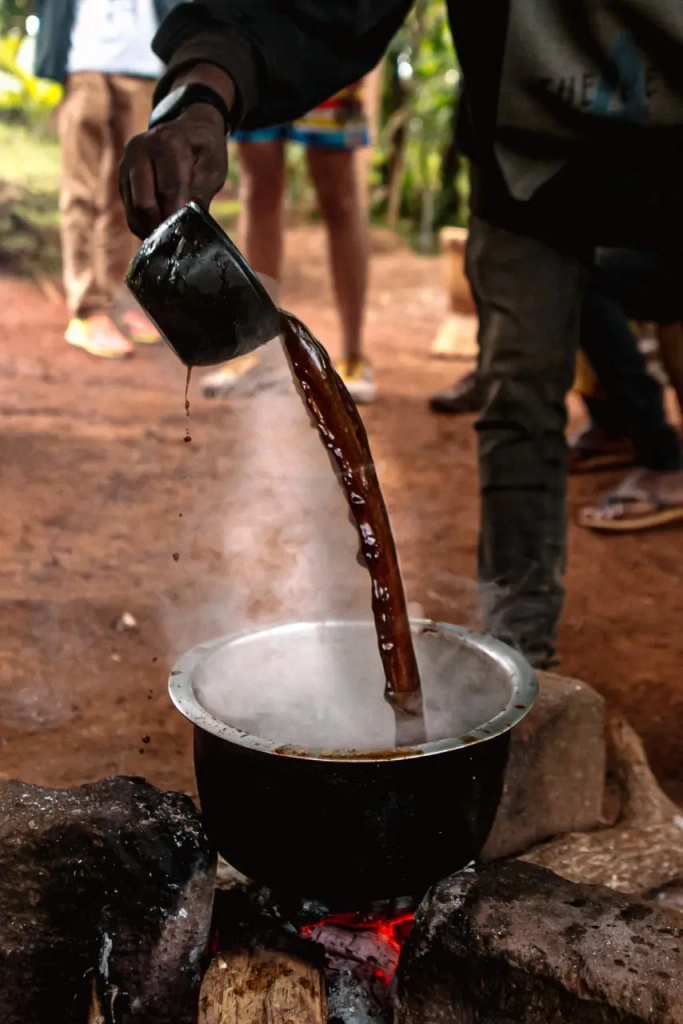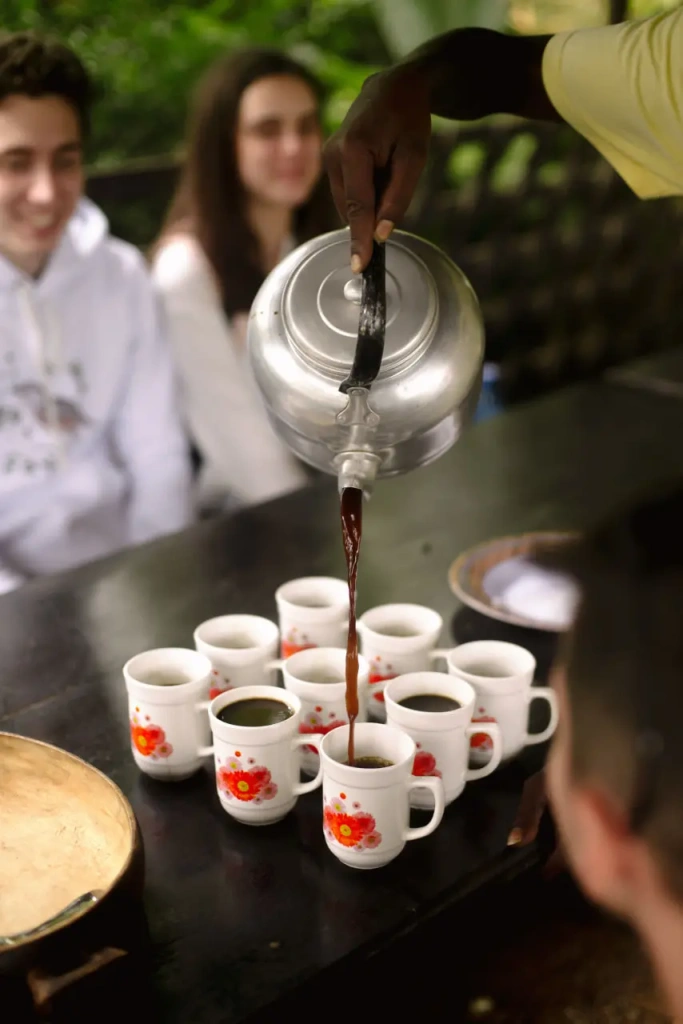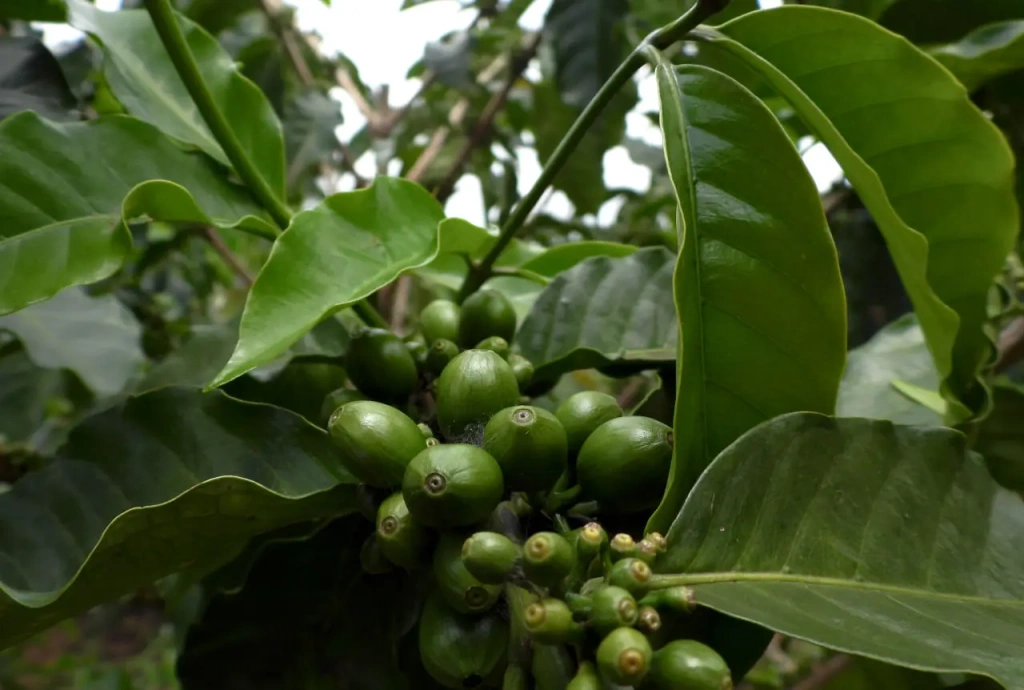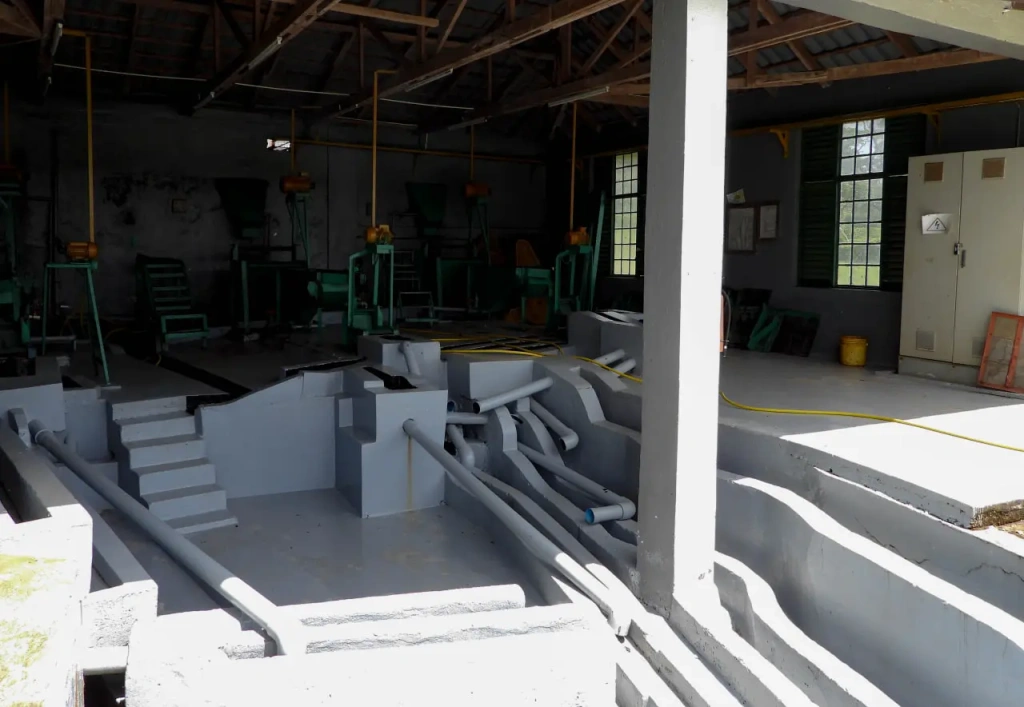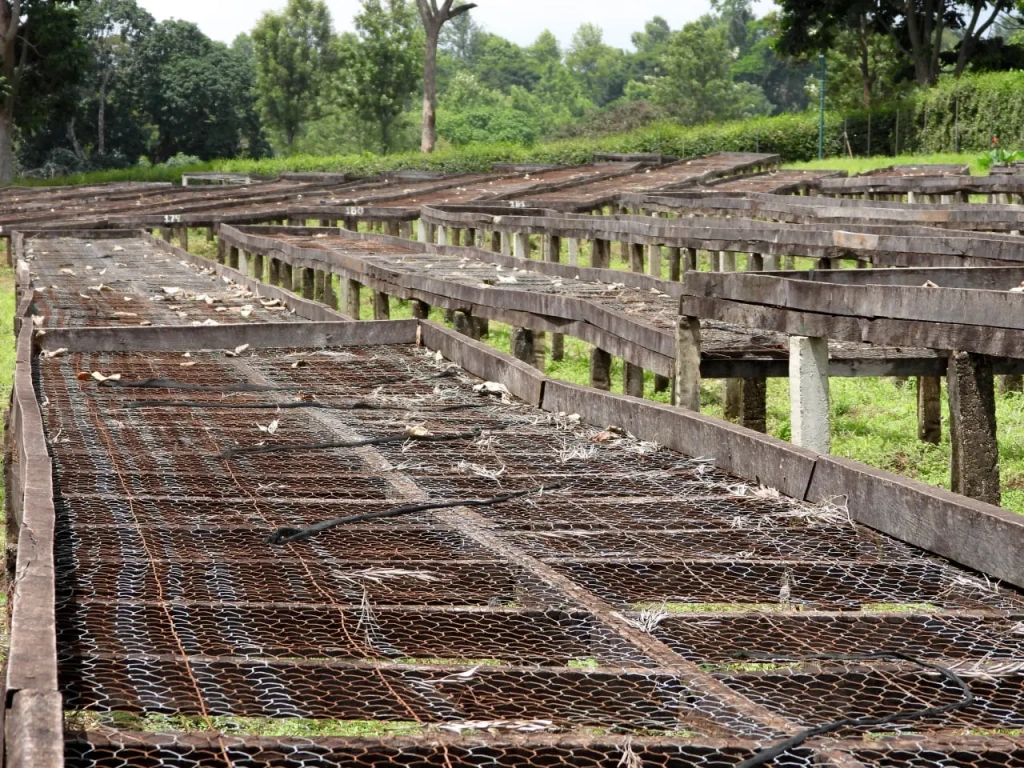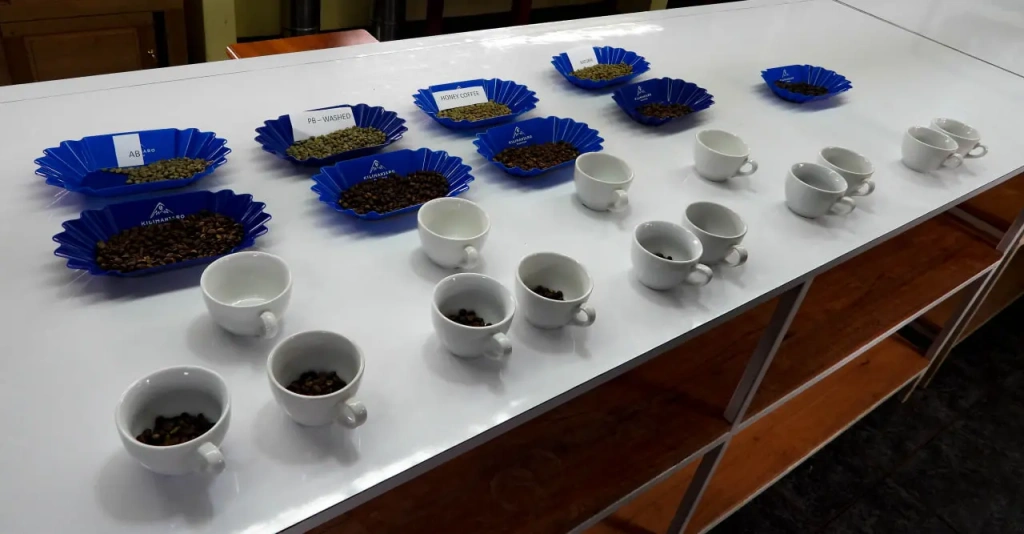Jump into the fascinating world of Tanzanian coffee with our in-depth guide. We'll take you through the various types and varieties grown in the country. From Peaberry to Kilimanjaro - Tanzania has a lot to offer to coffee lovers. Find out how the experts describe the taste and qualities of the local coffee. And don't miss our tips on visiting coffee plantations in Tanzania to get a firsthand taste of it all!
In our other articles, we look at the history of coffee in Africa, explore what is the best coffee in the world, and talk about Kopi Luwak, a unique coffee processed through animal digestion.
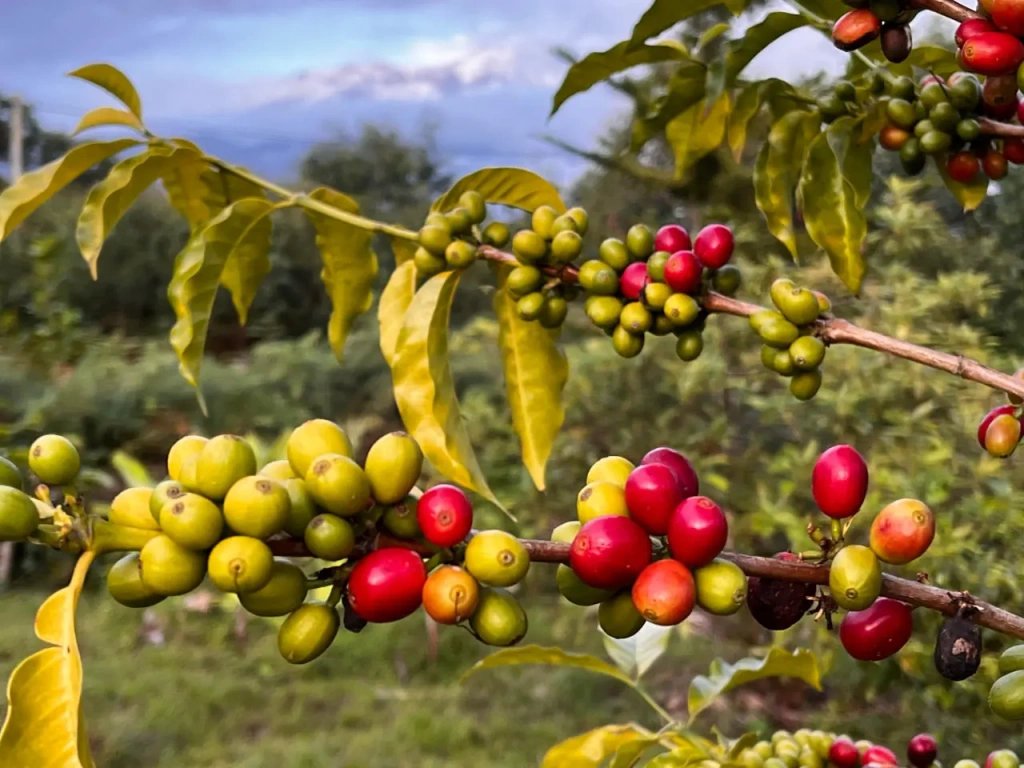
Does Tanzania have good coffee?
Tanzania is located near the equator in Africa and is known for its coffee cultivation. The soil in many regions of this country is very fertile. There are several prominent volcanoes here. For instance, Africa's most famous mountain, Kilimanjaro, consists of three volcanic cones. This means that the slopes of the mountain and the lands around its base are rich in various minerals. They supply coffee trees with everything they need for rapid growth. As a result, coffee berries mature with a well-balanced taste.
The taste of the future beverage is also influenced by the climatic conditions in which the coffee trees grow. It's often said that good coffee is grown at high altitudes. Another crucial factor in the maturation of coffee beans is temperature. The most delicious coffee comes from berries that have matured in cooler conditions. High altitudes provide the right temperature and ideal environment.
Tanzanian coffee's most famous trade names — Moshi, Arusha, and Kilimanjaro — are considered High-altitude coffee refers to coffee that has been grown on plantations located no lower than 1,200 meters (3,940 feet) above sea level. Sometimes the benchmark is set at 1,400 meters (4,590 feet). The labeling for such coffee is "Strictly High Grown" (SHG) or "Strictly Hard Bean" (SHB). Exactly the type that is highly valued. Thanks to them, Tanzanian coffee ranks among the best in the world. Also on the list are coffees from Kenya, Ethiopia, Guatemala, and Costa Rica, as well as from the Indonesian islands of Sulawesi and Sumatra, and of course, Jamaica. Tanzania is renowned in the coffee world for a special type of coffee bean — peaberry. Moreover, it is with the peaberry coffee type that Tanzania is primarily associated.
Coffee is the second highest-valued agriculture export in Tanzania after tobacco. This means that coffee cultivation is taken seriously here as coffee exports significantly contribute to the economy. Organizations like the Tanzanian Coffee Board ensure that the local coffee industry is rapidly developing while maintaining international standards of quality control.
Coffee grown at an altitude ranging from 900 to 1,200 meters (2,950 to 3,940 feet) is labeled as "High Grown" (HG) or "Hard Bean" (HB).
Coffee cultivated at an altitude between 500 and 900 meters (1,640 to 2,950 feet) is referred to as "Standard" or "Central Standard."
Coffee from the Kilimanjaro region of Tanzania is considered one of the world's finest premium varieties. A beverage made from these beans has a full body, rich flavor profile, and bright wine-like acidity.
Tanzania is often referred to as an emerging star in the world of Specialty coffee is a premium category of the highest quality coffee. Only a specific batch of coffee that has undergone a 15-step sorting process and a special method of processing can qualify for this category. This category accounts for only 8-10% of the entire global Arabica crop. To earn this designation, a lot of work is done by a team of specialists, from bean pickers to roasters. Being in this category means receiving the highest praise from professional coffee connoisseurs of an international organization called The Specialty Coffee Association (SCA) has been in existence since 2017. It grew out of the organization founded by coffee enthusiasts in 1982, the Specialty Coffee Association of America. The association comprises coffee producers, as well as exporters, roasters, sellers, and suppliers of specialized equipment. The association hosts championships worldwide and trains Q-graders. Those are experts who can blind-taste and evaluate coffee on a 100-point scale according to the regulations developed by the organization.
After learning all these facts, there's little doubt left that coffee grown and harvested in Tanzania is a top-quality product recognized worldwide.
What is Tanzanian coffee?
In Tanzania, both Arabica and Robusta — the two most popular types of coffee trees — are grown. Many think these are coffee varieties. That's not entirely accurate. To understand what exactly grows in Tanzania, let's briefly go through the coffee hierarchy.
Coffee Hierarchy
Firstly, coffee is divided into types, meaning species of coffee trees, of which there are over 120. However, the most important for cultivation are two: Arabica — Coffea arabica and Robusta — Coffea canephora.
Like in the animal world, these tree species have subspecies or varieties. These can either be naturally occurring, originating in the wild, or intentionally developed through human cultivation. The first are referred to as varieties, while the latter as cultivars. The most famous Arabica varieties are Bourbon and Typica. For Robusta, they are simply Robusta and Conilon.
Next, we have specific types of coffee grown in a particular region of a country. For instance, Sidamo and Yirgacheffe are Ethiopian varieties. Brazil Bourbon Santos and Yellow Bourbon are from Brazil. And, Jamaica Blue Mountain comes from the island of Jamaica.
Sometimes, the name of the coffee tree variety is used in the title, as with Bourbon. At other times, the country of origin or a specific toponym is mentioned. For example, Blue Mountains is the name of mountains in Jamaica, and Santos is a port city in Brazil. Occasionally, the name of a variety is more specific than just the geographical origin. For instance, the Pacas variety is named after a farmer from El Salvador in whose estate it was cultivated.
There are between two to three thousand coffee varieties worldwide.
What type of coffee does Tanzania have?
As we've previously mentioned, Tanzania cultivates two types of coffee: Arabica and Robusta. Arabica accounts for about 70% of Tanzanian coffee, while the remaining 30% is Robusta. The map below shows countries that significantly contribute coffee to the global market. Countries specializing in Robusta are marked in dark green, those producing Arabica are highlighted in yellow, and countries growing both types are indicated in regular green. Tanzania, located in East Africa, specializes in both Arabica and Robusta.
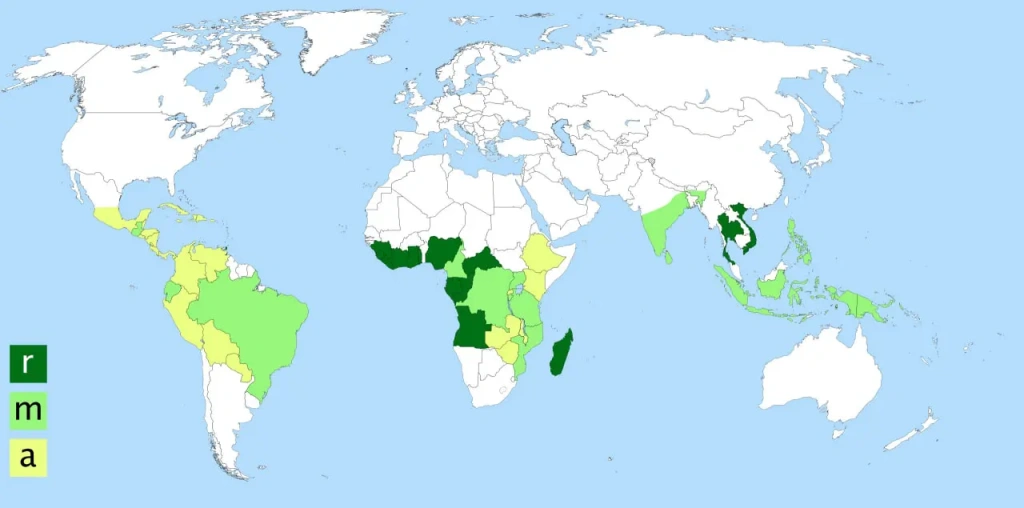
According to the Tanzania Coffee Board, Tanzania coffee production encompasses three distinct types:
- Robusta processed through the dry milling method.
- Arabica processed through the wet milling method.
- A limited quantity of naturally processed Arabica.
As you can see, here we’re talking about the In the coffee industry, there are four types of coffee bean processing. The most popular are washed and dry (or natural) processing. Dry processing is also commonly referred to as natural processing. These terms are interchangeable. There are still two main types. All the robusta in Tanzania undergoes natural processing, meaning it is sun-dried. The majority of arabica is washed in tanks and then dried. Only less than 5% of arabica is sun-dried without prior wet processing.
Let's look at the map of regional coffee plantations in the country. We can see that robusta is grown in one region in northwest Tanzania - Kagera. Arabica plantations are concentrated in several other regions. The areas of its cultivation mainly form three zones. Mbeya, Mbinga, and the largest northern zone, which includes the mountainous regions of Arusha, Kilimanjaro, Manyara, and Tanga.
Coffee cultivation regions in Tanzania
Kagera is a region located west of Lake Victoria, with very large plantations where Robusta is grown. There are a couple of surprising facts about Tanzanian robusta.
Firstly, coffee has been grown here for a long time. Local Haya farmers began cultivating it even before Europeans introduced coffee trees to Tanganyika, as the territory was then called. For instance, in the Kilimanjaro region, under German rule, coffee was introduced in 1898. It is known that the Haya people cultivated coffee by at least the mid-19th century. Secondly, the area of Robusta plantations in Tanzanian Kagera is so vast that it surpasses both Ethiopian and Kenyan plantations.
In Kagera, coffee grows at an altitude of 1200-1400 meters (3940-4593 feet) above sea level. The soils here are fertile clayey. The harvesting of robusta takes place from May to October.
The The following regions of Tanzania are included in the Northern Highlands: Arusha, Kilimanjaro, Manyara, Morogoro, and Tanga. encompass regions like Arusha, Kilimanjaro, and others. The primary coffee fields are situated on the slopes of Mount Meru, Kilimanjaro, and Pare Mountains. The first two mountains are volcanoes, and the soil is ideal for coffee cultivation. If you look at a world map showing the main coffee-producing regions, you'll notice that almost all of them are located on the so-called Pacific Ring of Fire, along the tectonic plate boundaries. Tanzania is not part of it, but due to the rift in the African lithospheric plate, there are many local volcanoes here.
In northern Tanzania, arabica is grown, and the coffee is of premium quality. Several factors contribute to that. Firstly, the rich soil is abundant in minerals and other beneficial substances. Secondly, the high altitude of 1250-1400 meters (4101-4593 feet) above sea level. Thirdly, ample rainfall and a cool climate. The coffee beans harvested here have no bitterness. In both the north and south of the country, coffee is harvested from July to December.
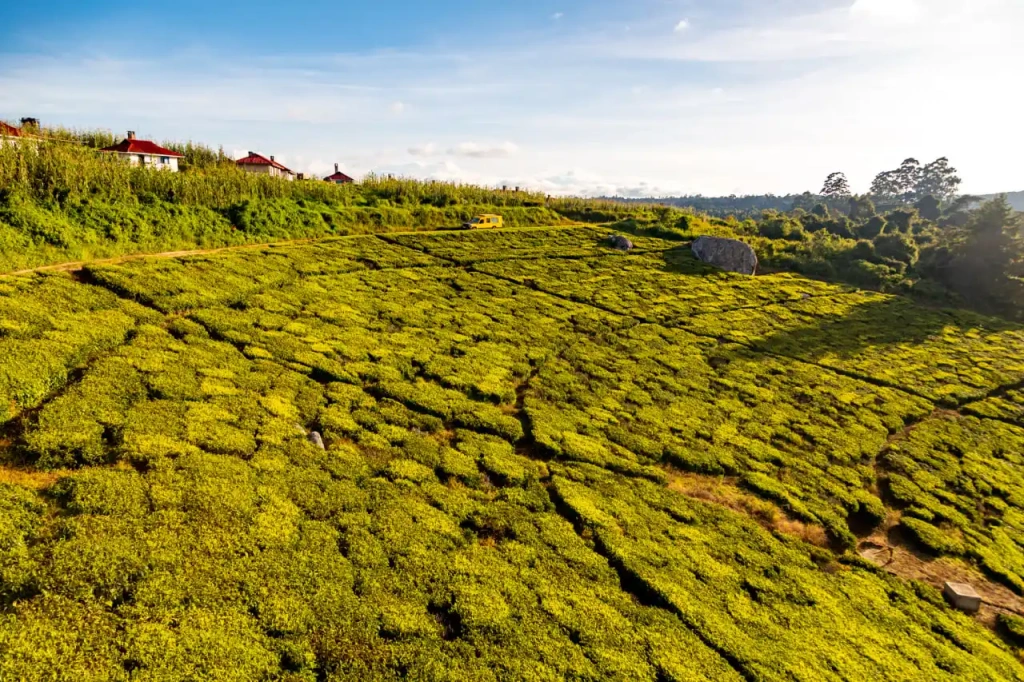
The The regions of Southern Highlands in Tanzania where coffee is grown include: Ruvuma, Songwe, Katavi, Mbeya, Njombe, and Iringa. This area includes the Matengo Highlands and other mountains of non-volcanic origin. include the largest regional coffee supplier, Mbeya region, as well as neighboring regions. These highlands border Lake Malawi (Lake Nyasa), one of the three Great African Lakes located in Tanzania. In the regions of the southern highlands, coffee is grown at altitudes ranging from 1200 to 1800 meters (3940-5910 feet) above sea level.
Coffee from the southern mountains of Tanzania is dried in very good conditions. The transportation of the finished product is also well-established here using the correct technology. Coffee from the south of Tanzania does not get "soaked" during transportation. In fact, there is a problem with defects in the rest of Tanzania caused by improper transportation of coffee beans.
In Tanzania, there are individual plantations located even higher, up to 2500 meters (8200 feet). Such altitude is considered almost the maximum possible for coffee cultivation. Arabica coffee trees are planted up to this elevation. Robusta grows in Tanzania primarily at altitudes of 800–900 meters (2625-2950 feet).
Two more locations with coffee plantations are worth mentioning. The first is the Kigoma region, bordering Lake Tanganyika, the deepest lake in Africa. The second includes regions bordering Lake Victoria, namely Mwanza and Mara.
In Tanzania, coffee is not only cultivated but also grows wild. There are quite a few species of coffee trees here. Interestingly, new species are still being discovered in Tanzania. Recently, a wild species, Coffea kihansiensis, was described. It is thought to have the potential to improve coffee varieties through selection. Another new species is Coffea bridsoniae. The former was discovered in Morogoro, south of the Udzungwa Mountains. And the latter in several forest reserves of the East Usambara Mountains. Both species are considered Tanzanian endemics. Together with those, Tanzania is home to a total of 16 species of coffee trees, half of which are endemic.
This puts Tanzania in second place in the world in terms of coffee species diversity. Madagascar tops the list with its 57 species. Here we talk about the biodiversity of wild coffee plants, not artificial cultivars.
What is Tanzania peaberry coffee?
Tanzania peaberry coffee is widely known worldwide. But what is peaberry coffee exactly? Typically, a coffee fruit, known as a coffee cherry, has two seeds. In approximately 1–9% of cases, due to a genetic anomaly, only one seed develops inside the fruit. Coffee cherries with a single seed are called peaberry. A single seed, having more space in the berry, grows larger. It is not flattened like the usual pair of seeds. The taste of such a bean surpasses the taste of regular coffee beans. Therefore, peaberry is highly valued and sold at a higher price.
Tanzania peaberry coffee is often roasted at a medium level, which best reveals its taste. The aroma becomes more complex, with hints of citrus, pineapple, and sometimes coconut. A pleasant acidity gives off wine tones, while the taste remains delicate. The floral bouquet leaves a velvety sensation on the tongue.
Along with the Kilimanjaro variety, Tanzania peaberry is considered the best of all that Tanzania offers to coffee connoisseurs. Its excellent taste rightly allows for selling Tanzania peaberry coffee at a high price.
What does Tanzania coffee taste like?
Speaking of the taste profile of Tanzanian coffee, one must at least distinguish between its northern and southern varieties.
In general terms, northern coffee is characterized by its richness in acidity and body, a balanced taste with a hint of sweetness, and a pleasant aroma.
Southern coffee stands out with its pronounced fruity and floral taste, delicate acidity, and medium body.

Arabica coffee from Tanzanian volcanoes Kilimanjaro and Meru has a bright fruity taste with a distinct lemony note. Its acidity is noticeable, and its flavor profile is well-balanced. The robust body is characterized by a smooth taste with a velvety sensation it leaves in the mouth. Additional recognizable nuances of Kilimanjaro coffee include vanilla, sweet chocolate, and even Praline is a dense mass made from crushed roasted nuts with sugar. It is used as a dessert ingredient for chocolates, cakes, etc. Sometimes, cedar, black tea, and spice notes emerge.
When describing the acidity of northern Tanzanian Arabica, it is noted to be reminiscent of wine. Because this coffee grows on rich volcanic soil, the taste is deep and robust. The body can range from medium to heavy, and very rich in flavor.
What kind of coffee is grown in Kilimanjaro?
The most famous trade names for local coffee are Kilimanjaro, Arusha, and Moshi. This coffee grows close to the border with Kenya and is very similar in characteristics to Kenyan coffee. Kenyan coffee is more popular worldwide, so all the positive attributes you've heard about apply to these Tanzanian brands as well.
Kilimanjaro and Arusha are regions in Tanzania, and Moshi is a city, the capital of the Kilimanjaro region. It is here that the office of the oldest cooperative in Africa is located - the The Kilimanjaro Native Cooperative Union (KNCU) is an association of cooperatives that grow coffee on the slopes of Mount Kilimanjaro. The organization was founded in 1930 by the British District Commissioner of Moshi, Charles Dundas, whom the local Chaga people greatly respected. The cooperative union still exists today. It unites 70,000 local farmers, buying coffee beans from them and selling coffee at a fair and high price. The union is managed by the farmers themselves, ensuring social and economic freedom for small coffee producers. It is considered the largest buyer of Tanzanian coffee beans from Kilimanjaro farmers, managed directly by the farmers themselves. Like other coffee cooperative unions, it sells coffee, advocating for the interests of local producers.
pop-up: The Kilimanjaro Native Cooperative Union (KNCU) is an association of cooperatives that grow coffee on the slopes of Mount Kilimanjaro. The organization was founded in 1930 by the British District Commissioner of Moshi, Charles Dundas, whom the local Chaga people greatly respected. The cooperative union still exists today. It unites 70,000 local farmers, buying coffee beans from them and selling coffee at a fair and high price. The union is managed by the farmers themselves, ensuring social and economic freedom for small coffee producers.
It is also in Moshi where a weekly auction is held, where farmers sell their coffee. Legislation requires small coffee farms to sell their beans through this auction. Top grade coffee growers are exempt from this requirement and can trade directly with roasters, securing better prices. This encourages Kilimanjaro farmers to improve the quality of their coffee cultivation.
Coffee grown on the highest mountain in Africa is considered one of the best on the entire continent. Expert ratings and private coffee buyers consistently deem it excellent, reaching the highest quality.
What does coffee from the Southern Highlands taste like?
Arabica coffee grown in the southern mountains of Tanzania, in the regions of Mbeya, Ruvuma, and others, has a distinct fruity taste. It reveals notes of cherry and mandarin. Often its rich delicate taste is complemented by chocolate and caramel undertones, revealing the taste of molasses.
The body of this coffee is described as silky, setting it apart from all other African Arabica varieties. A subdued gentle acidity accentuates the sweet fruity flavors. Floral aromas are added to the fruity notes. The density of coffee from southern Tanzania is medium, with a soft viscosity.
Coffee sourced from the southern regions of the country is typically well-dried, and its transportation is done correctly. The percentage of defects is low, which exporters greatly value. Often, batches from Ruvuma receive high expert ratings.
What does coffee from the western shore of Lake Victoria taste like?
Robusta coffee from western Tanzania has a classic taste of premium Robusta. This classic premium Robusta truly blooms in a dark roast. Its full, vivid character unfolds, so much so that it makes sense to brew the beans for a second serving. The dark roast reveals a pronounced chocolate flavor, which is hidden if subjected to a medium roast. A touch of spice also emerges.
The acidity of coffee from Kagera is described as lively and noticeable, yet delicate. This great coffee has a very pleasant citrus taste, complemented by caramel aromas. It is suitable even for a light roast, yielding a moderately bitter drink to start a new day with.
What does Tanzania peaberry coffee taste like?
It's worth mentioning the profile of a cup of Tanzania peaberry coffee, selected from the best local plantations. As we've mentioned before, this is a special type of coffee bean that matures as a single seed in a coffee cherry, unlike regular fruits that have two seeds. The absence of competition and doubled nutrient supply brings the single bean to a condition where it concentrates all the best that grows on the slopes of Tanzanian volcanoes. Every flavor, nuance, and aroma is intensified twofold.
This Arabica with an increased caffeine content offers a superior taste profile that fills the cup. For its exquisite aroma and delicate aftertaste, Tanzania peaberry coffee is highly cherished by many a coffee lover worldwide. They spare no expense when they manage to acquire a package of peaberry from Kilimanjaro or Ngila plantations. Naturally, on the market, this particular coffee often sells for more than all other types and varieties from Tanzania.
Tanzania peaberry coffee has a bright fruit-chocolate taste profile. It resembles blackcurrant with a hint of chocolate, leaving a sweet aftertaste. This sweet tenderness is accentuated by a gentle acidity typical of all Tanzanian coffee. It is available in small batches, so one might have to search for it.
Why is Tanzanian coffee so good?
To conclude, let's highlight the main characteristics of Tanzanian coffee. It's a high-quality coffee grown at high altitudes. This is especially true of Tanzanian Arabica. Its deep and vivid taste is complemented by notes of berries and fruit. A gentle wine-like acidity never overwhelms the overall symphony of taste and aroma. A medium roast is great for unveiling the full taste profile. However, those who love a dense drink with strong chocolate notes will appreciate Tanzanian coffee roasted to medium-dark or dark shades.
Blessed with the richest soil, Tanzania's coffee industry is flourishing. The world is waking up to the delights of its Arabica and Robusta, and connoisseurs prize its most popular varieties: Bourbon and Kent. Typica, Blue Mountain, N39, and Nyasa find devoted fans as well. Premium Tanzanian beans find their way to discerning palates in Japan, the US, Germany, Russia, Italy, Australia, and even Morocco.
In recent years, Tanzania has maintained roughly the 15th position in the list of the largest global coffee suppliers from nearly 50 countries. Given the high percentage of premium coffee, this is a very good indicator. In Africa, Tanzania consistently ranks among the top five coffee producers. By the way, how highly is African coffee valued compared to South American and Asian coffee?
Coffee from Africa
Africa is home to the largest number of coffee tree varieties. Many countries on this continent cultivate coffee and are considered valuable suppliers of high-quality beans.
Favorable climatic conditions, suitable natural terrain with highlands and volcanoes, and the right approach to agriculture contribute to the reputation of African coffee. By the right approach to agriculture, we mean traditions of natural coffee cultivation without the use of chemical fertilizers. African coffee is appreciated by both professionals and beverage enthusiasts. Another argument in its favor is exclusively manual harvesting.
Among all African countries, Ethiopia, Kenya, Uganda, and Tanzania can be considered the leaders in terms of coffee production. Ethiopia is the historical birthplace of Arabica and supplies a considerable amount of this coffee to the market, including the specialty category. Kenyan coffee is known and loved worldwide for its bright acidity - a distinctive feature of local Arabica. Uganda is an African leader in the cultivation and supply of Robusta, considered a probable birthplace of this coffee tree variety. Despite the impressive characteristics of Ugandan coffee, its prices remain not as high as those of other regions. Tanzania supplies both Arabica and Robusta. In addition, the country has established itself well in the specialty coffee category. Tanzanian coffee successfully competes with other African coffees and the renowned Colombian coffee.
Speaking of the taste of African coffee, its distinctive features are a fruity taste and lively acidity. Good balance, pleasant sweetness, and often a wine-like acidity have given it a good reputation. Ethiopian and Kenyan coffees unequivocally fall into the category of the best coffees in the world.
The most popular Ethiopian varieties include Yirgacheffe - a highland coffee that is dense and has citrus acidity and a long aftertaste. Another one is Sidamo - a soft Arabica with sharp floral notes and a caramel undertone. Harrar, with an interesting complex taste with spicy notes and a dry fruity tone reminiscent of red wine, is also famous. The most popular coffee from Kenya is Kenya AA. It is berry-citrusy, and aromatic, leaving a soft aftertaste. It is considered one of the best varieties globally.
As evident, African coffees hold significant esteem among consumers worldwide. Particularly, in the realm of premium coffee batches that Africa abundantly provides. This acclaim is not unexpected, given the historical roots of coffee. It’s spread to every country in the world, much like that of people in ancient times, originated in Africa.
Where to buy Tanzanian coffee beans?
Now that you've gained insights into Tanzanian coffee, you may be eager to savor a beverage crafted from beans cultivated in the expansive lands of sunny Tanzania. Fortunately, this is easily achievable. This drink enjoys widespread popularity, and you can buy coffee beans from suppliers in numerous countries. For example, through online stores or specialized coffee shops locally. We don't recommend purchasing coffee from standard grocery store chains. Such packaged coffee tends to linger longer on the shelves due to a complex and extended logistical chain involving storage during transportation.
We won't suggest specific store links since this article serves an informative purpose rather than a commercial one. We are Altezza Travel, a tour operator based in Tanzania. Having resided at the base of Kilimanjaro for many years, we specialize in organizing expeditions to the summit of Africa's highest mountain, safari tours to the country's premier national parks, and excursions to culturally significant sites. We hold a deep affection for Tanzania and engage with the local residents daily. We really enjoy local coffee, but our professional activities lie in a different domain. In this article, our primary objective is to provide an honest portrayal of coffee cultivation in Tanzania.
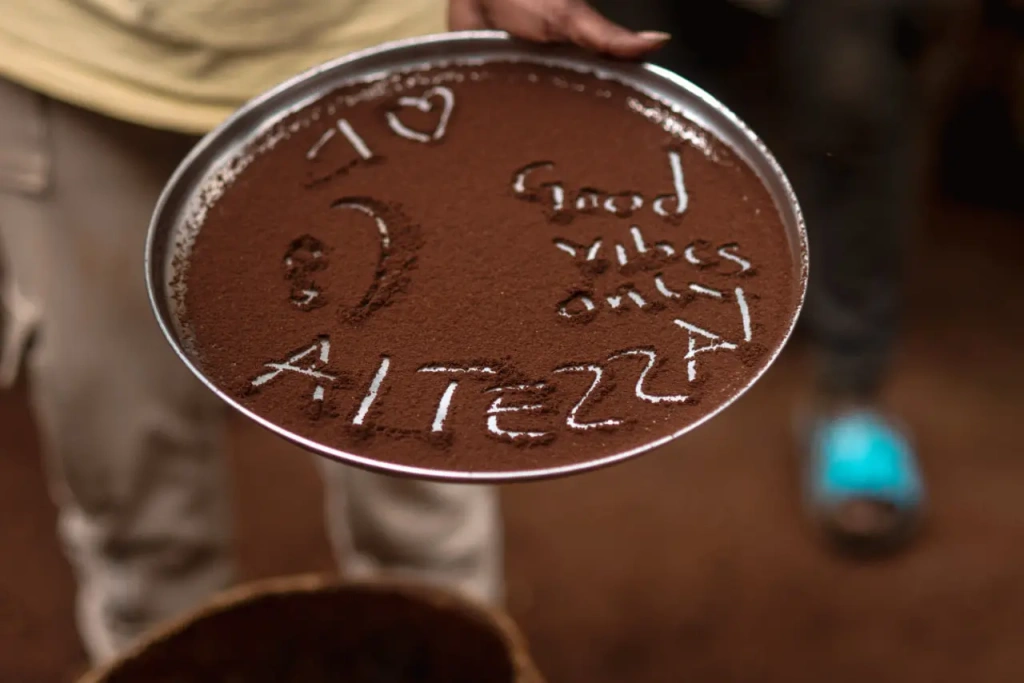
Our only suggestion is to heed the information shared by the seller when considering Tanzanian coffee. Look for details about whether it's pure Arabica, robusta, or a blend of both. Seek information about the coffee's origin, variety, and roasting level. A reliable seller provides insights into the roasting date for those specific beans. An exemplary one goes further by specifying the coffee's packaging date post-roasting.
Select the finest Tanzanian coffee and enjoy its wonderful taste! Should you wish to explore local coffee plantations during your Tanzanian journey, we'd be delighted to arrange a tour to Kilimanjaro and Arusha coffee farmers for you.
Coffee plantation tours in Tanzania
We offer several options for visiting local coffee plantations, tailored to your schedule. If you have a full day to immerse yourself in the culture of the Chaga people, who traditionally inhabit Kilimanjaro, we recommend the comprehensive Materuni Waterfall and Coffee Farm Tour.
For those interested in witnessing professional Tanzania coffee production, we suggest a visit to Kilimanjaro Plantation. It is the largest plantation on Kilimanjaro. There the entire cycle from growing coffee bushes to tasting the final brew is showcased. You'll not only observe the coffee trees but also gain insights into the washing, drying, roasting, and capping processes.
A trip to the local coffee farmers
Materuni is a village situated on the slopes of Mount Kilimanjaro near the protected forest zone of the national park. It is also the name of a magnificent waterfall on the Mvare River. If you are impressed by water descending from a great height surrounded by a tropical forest and want to explore real local culture, then this adventure is for you.
The Matroni excursion consists of two parts: a walk to the waterfall and a visit to a coffee plantation, where you can try freshly brewed coffee. Please note that this is more of a cultural program with a non-professional approach to working with coffee. The beans are often over-roasted, and the village members cultivate coffee without professional knowledge. But it's traditional local production.
In the morning, you will stroll through the village, see how local farmers live, and may encounter beautiful chameleons sitting right on the bushes by the road. A friendly guide will tell you about the traditions of the Chaga people. And at the end of the walk, you will see the waterfall. By lunchtime, you will return to the village, where a set table with hot and delicious food will be waiting for you. After that, the magic of creating coffee will begin.
Before your eyes, the beans from the coffee berries harvested the day before will be ground in a wooden mortar to the rhythm of local songs. Then the obtained mixture will be roasted over an open flame under the African sky. At any stage of preparation, you can participate in the process if you wish. Finally, the aromatic powder will be brewed and poured into cups. And you will taste delicious Kilimanjaro coffee, sitting in a picturesque gazebo on the slope of the great mountain. This is a real marvel—you just saw the raw coffee beans, and in about half an hour, you're drinking coffee brewed from them.
Excursion to an industrial coffee plantation
On the southern slope of Kilimanjaro, in the village of Kibosho, there is the largest coffee plantation in northern Tanzania, Kilimanjaro Plantation. There is a farm for growing coffee trees, a water processing station for beans, and a laboratory where professional cup tasters work.
The history of coffee in Tanzania began in these places. The old farm buildings were constructed in 1918 and are still used for storing the final product. The sweet fragrant aroma of coffee doesn't dissipate within their walls even during the off-season. The plantations, where over a million trees are grown, are situated at an altitude of 1350–1500 meters (4430–4920 feet) above sea level.
As soon as you enter the gates of the farm, you'll immediately feel the scale of this plantation: rows of neatly planted trees stretch into the distance, the tables for drying grains seem endless, machinery moves everywhere, and workers are busy. The active season, when the fruits ripen, lasts from May to November. But there is work here in other months as well. So visiting the largest plantation is interesting at any time of the year.
You'll be guided to the coffee trees, and the guide will explain how they are cared for. You will also be able to peek into the greenhouses where small seedlings are growing. Guides will share some professional intricacies that contribute to harvesting a huge crop and bringing up to 75% of coffee beans to the specialty market. This is a very high indicator backed by over half a century of experience.
The coffee bean washing station is a comprehensive labyrinthine system where the beans are sorted right during the processing phase. Observing the washing process is genuinely captivating! It's a true spectacle, tracking the journey of the Tanzania coffee beans from the tank through water channels to the location where the sorted batches begin their drying process under the African sun.
At the end of the tour, a tasting awaits you. Certified cup tasters will try the coffee, determine its taste palette, and also talk about the differences between different varieties. Of course, you will also participate in the tasting, savoring a drink made from freshly roasted Tanzania coffee beans. They will teach you how to taste and distinguish the slightest nuances of coffee.
Diving into the professional world of coffee is extremely interesting, even for those not passionate about this beverage. The professionalism of all participants in the process and the highest quality of the result will impress all farm guests. At least that was our experience when we visited Kilimanjaro Plantation on a tour. We were warmly welcomed, with every detail explained and all our questions answered.
We hope that one day you'll visit Tanzania and experience firsthand everything we've just described! We will be happy to introduce you to the rich flavors of local coffee, and also to the myriad wonders of this incredible country. Our doors are wide open to welcome you.
May you always have exceptional coffee within reach, savoring each sip with delight!











